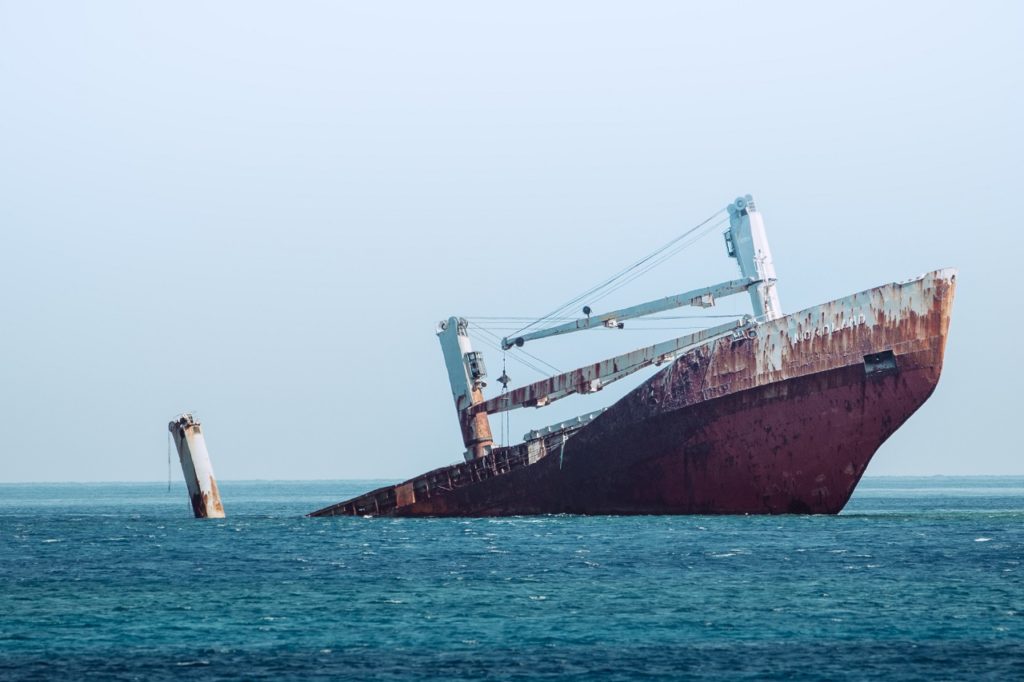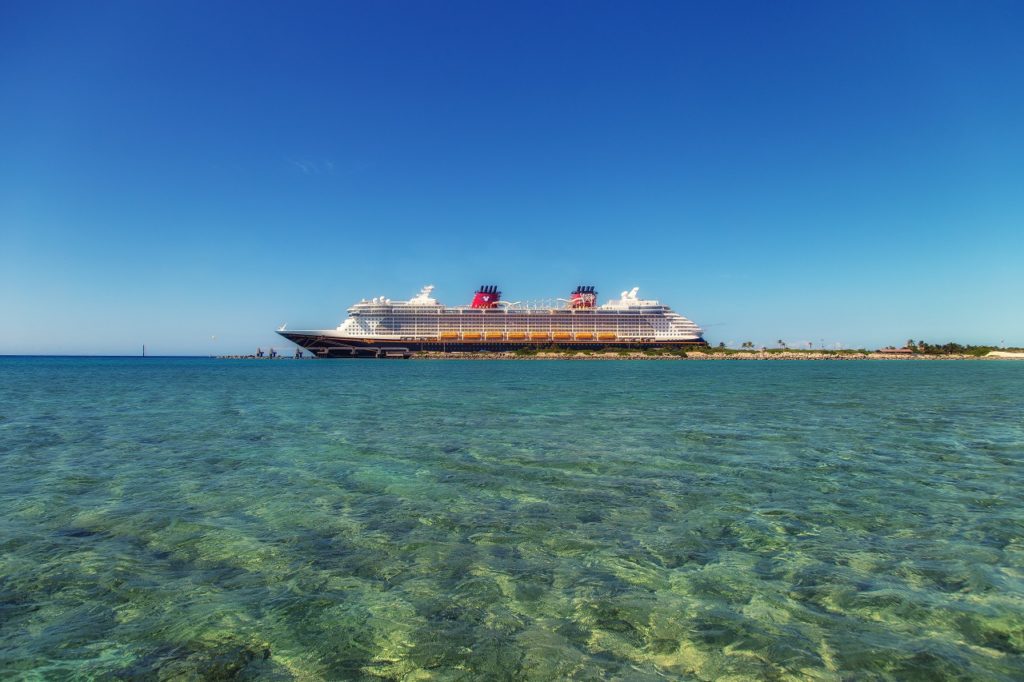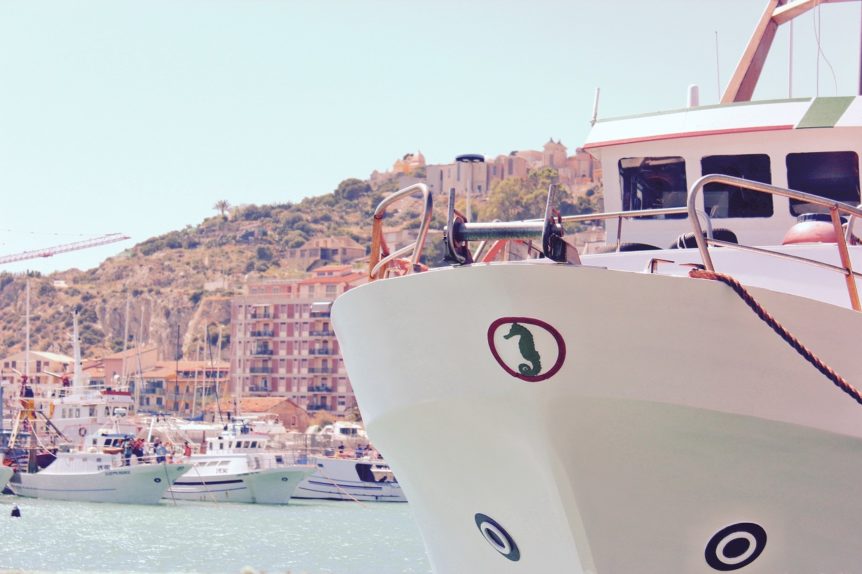34 people were pronounced dead after a fire ravaged a scuba dive boat off the California coast in the worst maritime disaster the state has ever seen. The 75-foot-long vessel that was christened Conception sank off Santa Cruz Island.
It had 33 passengers on board and one crew member who were all asleep when the fire broke out on the early morning of September 2, 2019. In such circumstances, wrongful death suits filed by the surviving family members of the boat fire victims against owners of sunken boats are almost always certain.
However, the Conception boat owners seek to invoke an 1851 maritime law that essentially shields them from any form of liability in the dive boat fire disaster. This is the same law that was invoked after the Titanic tragedy.
The California boat fire case brings to the forefront many questions about the applicability of a seemingly archaic maritime law to a modern-day disaster. The Santa Cruz boat fire forms the basis of this maritime law case study.
Level of Liability as Defined in Federal Maritime Law
If a fire broke out at an on-land facility and claimed 34 lives, the building owners would be held liable for those deaths. Such accidents would often result in the liable parties paying millions of dollars in wrongful death damages.
However, when an accident occurs in the ocean, maritime law kicks in, and the extent to which the boat owners bear the brunt of responsibility for the deaths is defined by the Limitation of Liability Act of 1851. It may seem odd that a law that a 168-year old law is still being used by maritime injury lawyers today but that is indeed the current state of affairs.
According to the statute, the owner of a vessel and its insurer can severely limit or, under certain conditions, escape entirely from any level of financial liability. This law applies to all accidents that occur on any waterway. So accidents involving barges, tugboats, and leisure boats are all covered under this law.
Four days after the Conception sank, Truth Aquatics Inc., the owner of the boat filed a petition in the US District Court in LA to invoke the statute. The law allows the owner of a vessel to request that a federal court limit the potential damages to an amount equal to the post-accident value of the boat, or exonerate them from damages altogether.
While most people find it quite bizarre that the owners filed suit so quickly and that the liability for the tragic loss of life in the boat fire could potentially amount to nothing, it is all perfectly within their legal rights. Truth Aquatics alleges that the Conception, which was burned down to the water line before sinking 60 feet deep in the ocean water, is now completely worthless, and they should, therefore, be exempted from liability in any potential boat fire lawsuit.
Maritime Law Was Invoked After Sinking of the Titanic
While this 1851 maritime law may seem financially motivated and morally abhorrent, it has been used by boat owners in the past to escape liability. Remember the infamous Titanic disaster of 1912?

More than 1,500 people lost their lives during the ship’s maiden voyage. White Star Lines – the owners of the Titanic – successfully invoked this law and were ordered to pay a measly $92,000 in damages. This was the cumulative value of the lifeboats that survived the calamity.
To successfully invoke this statute, a boat owner has to prove that their actions did not contribute to the accident or, as the 1851 law puts it, lacked “privity or knowledge” of the disaster. They prove this in three ways:
- That the ship was properly equipped
- That the crew was properly trained
- That the leadership and crew members followed the correct procedures
The Titanic was touted for all the sophisticated technology it had that made it “unsinkable”. White Star Lines’ defense argument was that they had no role to play in the captain steering the ship into an iceberg.
Maritime Law as Applied to the Santa Cruz Boat Fire
Today, technology advancements in global communications have made it easier for boat crew members and owners to keep in touch while the vessel is out at sea. This was not possible 168 years ago so one can understand the spirit behind the maritime statute. It is now virtually impossible for captains, boat leadership and crew to make any decision without first consulting the owners for approval.
The judge hearing the case will be looking for evidence that points to the owners’ knowledge or some level of involvement in the accident. They’ll likely be looking at:
- The crew’s background, education, and competency
- If the equipment onboard was sufficient to quell the flames
- The training of the crew and passengers
Truth Aquatics through their maritime lawyer alleges that the fire did not break out as a result of any negligence, knowledge or fault on their part. Invoking this law usually means that the owners will try to pass the blame onto a crew member.
Under maritime law, boat owners have a duty of care to both their crew and passengers. The standard owed to each category is what differs.
Duty of Care to Passengers

The boat owners are required to exercise “reasonable care under the circumstances” to safeguard the wellbeing of the passengers on board their vessels. This essentially means that owners are not strictly liable for any defects in the ship or its equipment. The burden of proof remains on showing that negligence played a significant role in causing the damages or injury.
Duty of Care to Crew Members
The crew members who were aboard the Conception are regarded as seamen as per the Jones Act. This federal statute which was established in 1920 and revised in 2006 exists to offer protection to maritime workers in a way that land-based laws do not. Here’s how.
If a land-based worker gets injured in their line of duty, they qualify for state-or federal-based workers’ compensation. This, however, doesn’t apply to maritime workers.
They can’t file for benefits or damages from their employer in the way that their land-based counterparts can. Jones Act helps seamen recover damages from injuries and accidents. Professions that classified as seamen include:
- Captains
- Pilots
- Engineers
- Fishermen
- Divers
- Deckhands
- Drillers
- Anchors
- Mates
- Bartenders
- Stewards
- Cooks
Essentially any individual who spends at least 30% of their time contributing to the work of a water-based vessel that frequents navigable waters is protected under this act. The owners’ duty of care to crew member gives their employees:
- A right to receive “maintenance and cure” if they become ill or injured during their service on the boat. This is the equivalent of worker’s compensation.
- A right to sue their employer for failing to fulfill a duty of reasonable care to make the vessel safe for the crew.
- A right to sue their employer for failing to provide a vessel, crew, and equipment that are “reasonably fit” for their intended purposes. This means suing for “unseaworthiness”.
A successful suit against the owners means proving that the owners’ failed in fulfilling their duty of care to the crew. While the exact cause of the boat fire is unknown, some of the boat’s equipment may likely be implicated to show “unseaworthiness,” for instance, failure of the smoke alarms to sound in good time or failure of the power strip.
Damages Recoverable
If the disaster had occurred more than three nautical miles from the shore, claims from the passengers and surviving kin would have been governed by a different statute – Death on The High Seas Act. This would effectively limit their damage claims to economic losses.

Compensation for emotional distress and pre-death pain experienced by the passengers cannot be sought. But since the accident occurred within California territorial waters, passengers and surviving next of kin can petition the state to supplement their damages.
Crew members and surviving kin can seek maintenance and cure as well as economic and non-economic damages. They can seek emotional distress, pain, and suffering damages if they can prove “unseaworthiness” or neglect as defined in the Jones Act.
Lawsuits Filed so Far
Christine Dignam, the widow of Justin Dignam, who died aboard the Conception, has filed a wrongful death lawsuit against Truth Aquatics Inc. She alleges that the vessel lacked adequate firefighting equipment, smoke detectors, and emergency exits.
She also claims that the vessel did not have a night watch on duty when the fire erupted. Dignam’s case is a counterclaim to the limitation of liability suit preemptively filed by the boat owners, which effectively puts on notice anyone who wants to contest the action giving them until July 1, 2020, to file.
According to the details of the suit, all six Conception crew members were asleep. This went against Coast Guard regulations that require a “roving” night watch. The suit also alludes to the fact that the boat’s electrical system was not safe given that passengers charged their battery-powered devices and equipment in the gallery above the sleeping-quarters.
Ryan Sims, a steward who survived the disaster, also filed a lawsuit against Truth Aquatics Inc. He claims that the owners failed to adequately train crew members on what to do in case of such an accident. He further alleges that they also failed to provide proper safety and medical equipment and safety rules. He seeks compensation for medical costs that resulted from his injuries, attorney fees, and punitive damages.
Seaman’s Manslaughter Statute
This statute criminalizes negligence, misconduct, or failure to perform prescribed duties aboard a vessel that results in the death of crew members. The three groups that are subject to criminal liability in such instances are:
- The ship’s corporate management
- Individuals charged with the responsibility of upholding the vessel’s condition
- The vessel’s officers like captains, pilots, and engineers
Seaman’s manslaughter statute differs from common law manslaughter in that the former doesn’t require the accused party to prove unstable mental state or heat of passion. The threshold is much lower, requiring only simple negligence which could be an act or omission that violates the standard of care.
Notable Cases

The most recent attempt to apply this statute occurred in Louisiana following the Deepwater Horizon blowout on April 20, 2010, where 11 crew members died. This was, however, dismissed after the District Court established that the two BP engineers who were aboard the vessel at the time were not crew members nor were they in operational control of the vessel and could, therefore not be held responsible for the lives lost.
The 2003 Staten Island ferry crash case, however, had a different outcome. On that fateful day, the pilot, who was concealing his use of pain medication, claimed to have taken painkillers the night before to alleviate pain due to a bad back. He ended up passing out while at the helm of the ferry the following day causing a crash that killed 11 people while critically injuring several others. He pleaded guilty to 11 counts of seaman’s manslaughter and was sentenced to 18 months in prison.
On July 19, 2018, a duck boat accident claimed the lives of 17 people aged between 1 and 76 when it capsized amid gusts of wind blowing at 65 mph. The captain of the Missouri duck boat, along with two other employees of the company were charged with 17 counts of seaman’s manslaughter and could be facing up to 10 years in prison if convicted.
Some Final Thoughts
The Santa Cruz boat fire will likely trigger changes in Coast Guard safety regulations for overnight fishing boats and dive boats like the Conception. It is also likely to reignite the debate over the fairness and applicability of the 1851 Limitation of Liability Act.
The general discussion will center on whether it should be changed, updated, or repealed. This will ultimately depend on the media coverage of the Santa Cruz case during proceedings as well as its eventual outcome. For now, it is impossible to predict how things will go until the exact cause of the fire is determined.
If you have more legal questions, you can also chat online with a Laws101.com attorney, where you’ll be instantly connected to a lawyer who can give you legal guidance on your specific case or question.
